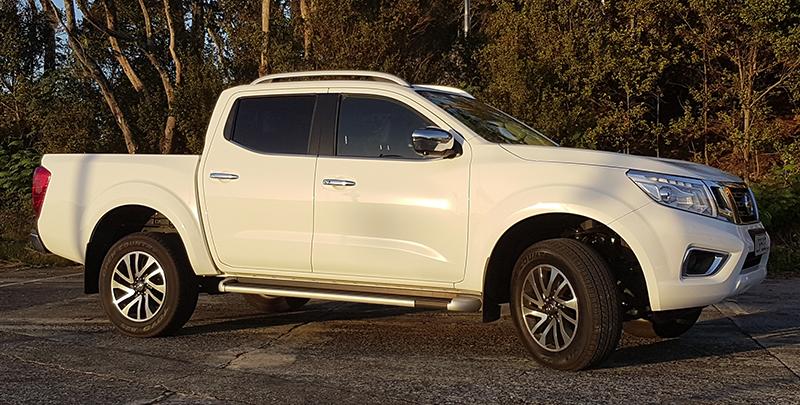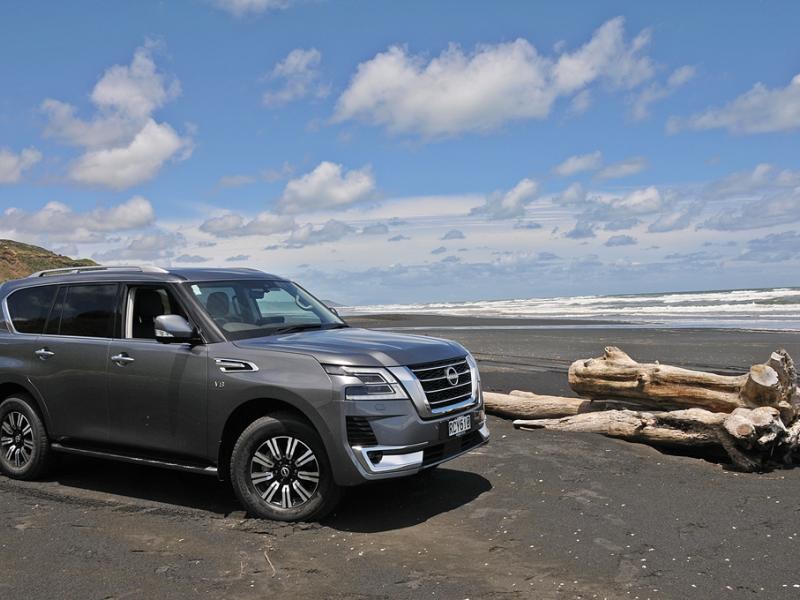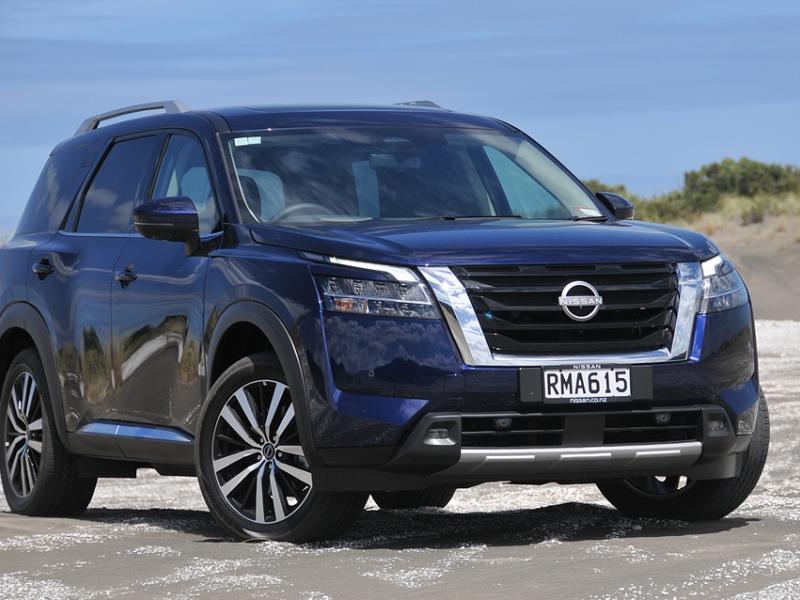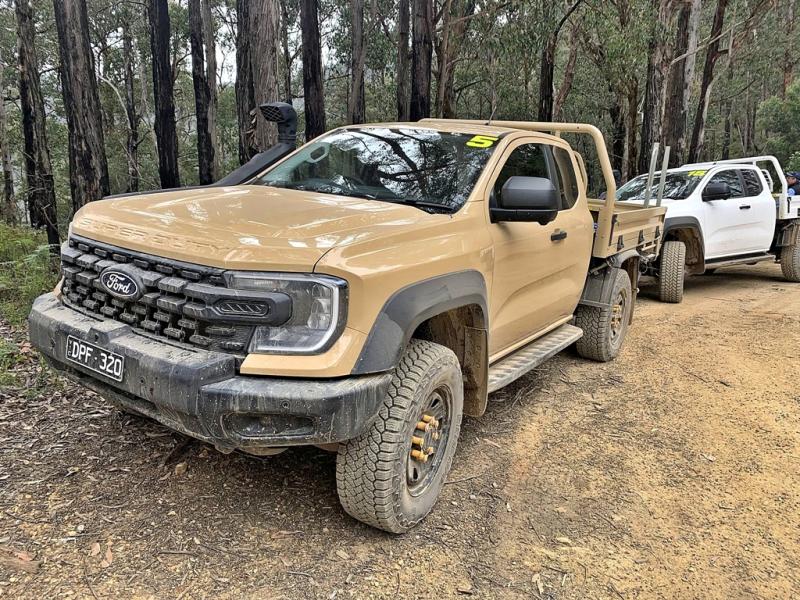A mid-cycle upgrade has turned Nissan’s NP300 Navara from Curate’s egg (good in parts) to a genuine contender for overall class honours. NZ4WD magazine editor Ross MacKay explains why.
Wow! Three simple letters yet slung together they mean so much.
When I first drove the then new NP300 Nissan Navara two years ago now I was non-plussed. Sure the new all-coil-sprung chassis and running gear package provided a better rear end ride, particularly on gravel, but overall I was left disappointed.
That all-important, but absolutely subjective ‘feel at the (steering) wheel’ was still ponderous, the front end felt oversprung compared with the new rear end and, well, I was just generally underwhelmed.
To which, all I can say now is, what a difference a couple of years can make.
Obviously I wasn’t the only motor noter – or buyer for that matter - who voiced concerns about the original NP300, because pretty soon after the launch the Australian arm of the company put together a team to come up with what in effect is a ‘Version 2.’
As mag contributor Damian O’Carroll reported in the May ’18 issue, the key changes/upgrades/improvements have been made to the suspension and steering of the double cab SL, ST and ST-X models.
The big change has been to a new dual spring rate package, “the first stage of which,” Damien wrote from the re-launch across the Tasman, “has a slower rate that allows for a more comfortable ride either unladen or with a light load, while the second stage has a higher spring rate that allows for heavier loads without compromising ride or handling.”
Nissan has also created new bump stops at the rear to assist with lateral body movement, and tweaked the steering, including revising the gearing and a lower ratio (down from 21.5:1 to 19.0:1) which reduces the number of turns from lock to lock from an arm-tiring 4.1 to a much more everyday use-acceptable 3.4.
Sits higher
It’s not hard to notice the changes either, the new (V2) model Navara now sitting noticeably (25mm) higher than the previous version when unladen, and a full 40mm up at its lowest point.
Engines and transmissions remain unchanged across the range – yet I can’t remember being as impressed with Nissan’s 140kW/450Nm twin-turbo 2.4 litre four cylinder and seven speed auto transmission first time around.
It really is an outstanding powerplant, one which combines uncanny smoothness and what I would now class as category-leading refinement from idle through to ‘time-to-change-up,’ with a nice, broad eminently everyday mid-range and positively searing (if that’s the right word to use when you’re an oil-burner!) top end.
It’s also worth mentioning that Nissan has taken the opportunity afforded by the suspension and steering upgrade to add even more ‘tech’ to the factory spec.
Amongst a raft of other additions the ST-X model now gets a 360 degree “Around View” (bird’s eye) function with its reversing camera. All Double Cab models now get second row ISOFix child seat mounting points and Sat Nav is included in the now part of the ex-factory King Cab ST spec.
The line-topping ST-X model cabin was - and remains – a very pleasant place to while away the hours in traffic (Auckland) or on the open road (anywhere else in NZ it would seem). The slimline, leather-trimmed seats are surprisingly comfortable, with the driver’s (infinitely) electrically-adjustable, and both front ones heated as well.
Ergo excellence
Climate air instantly takes care of the heat in summer and fogged up screen and windows when the days get longer and cooler and someone, somewhere in the interior design team obviously knows something about ergonomics.
The steering wheel mounted radio volume and cruise control, er, controls are the most intuitive and easiest to use I have so far encountered and the phone charging jack is actually easy both to find and use (which it isn’t on every vehicle I test).
Nor are there (coffee) cup holders as well placed (at each end of the dashboard at indicator stalk level) as well as two between the seats, or bottle holders moulded into each door card.
The key changes have been to the underpinnings, however, and I don’t think I can stress enough how much they have improved the driving experience.
Off-road there wasn’t much wrong with the original NP300. Lots of steering is actually handy in some circumstances, particularly when you are crawling along a rutted track in 4L, while the – in retrospect – overally soft rear end arguably aided traction in slop and sand, particularly in causal use on the as delivered A/T tyres.
Certainly the original model made short work of the steep and slippery grass gymkhana sections our farmer mate Duncan set out for our six-ute shootout in 2016.
No, it was on the road, in everyday use that the original was found wanting, here and obviously across the Tasman
Cut to the chase
Now – to cut to the chase – I would rate the upgraded Navara as the most refined, and therefore pleasant and easy to live with day-to-day, turbo-diesel double-cab ute on the market, bar none.
Don’t get me wrong, the engine lacks the sheer, addictive, muscularity of the 3.2 litre five-cylinder Ford/Mazda powerplant. And the steering - though vastly improved – still lacks the sporty quick-rack precision that makes the Ranger such an entertaining and rewarding beast.
Overall though the changes have massively improved ride quality, the ability to load up the tray and/or tow bar without compromising handling, road holding or braking, and general day-to-day drivability.
At a causal glance it might look unchanged but as Damian said in his launch story in the May issue; “the 2018 Navara is a far better vehicle than it was and is now a convincing competitor in the ute segment.”
Ends
SPECIFICATIONS
Nissan Navara NP300 ST-X
ENGINE: 2.3 litre (2298cc) common rail injection 4-cylinder twin turbo-diesel
TRANSMISSION: 7-speed automatic
POWER: 140kW@3700rpm
TORQUE: 450Nm@1500-2500rpm
ECONOMY: 7.0l/100KM
SUSP FRONT: Coil
SUSP. REAR: Coil
BRAKES: Disc front, drum rear
WHEELS/TYRES: 18”Alloy/Toyo A25 Open Country A/T 255/60 R18
TURNING CIRCLE: 12.4m
LxWxH: 5255x1850x1840mm
WHEELBASE: 3150mm
APP/DEP ANGLES: 32.4/26.7 degrees
GROUND CLEARANCE: 228mm
WADING DEPTH: 450mm
KERB WEIGHT: 1921kg
LOAD BED: 1503mm (l) x 474mm (d)
PAYLOAD: 930kg
TOWING: 750kg (ub), 3500kg (b)
TRACTION: ABS, EBD, TCS, VDC with BLSD, ABLS, BA, HAS, HDC
SAFETY RATING: ANCAP 5 Star
WARRANTY: 3yr/100,000km
RRP: $61,990
To read every story in the June 2018 issue of NZ4WD go to Zinio.com (May 18) or purchase your own hard copy at the Adrenalin store.







